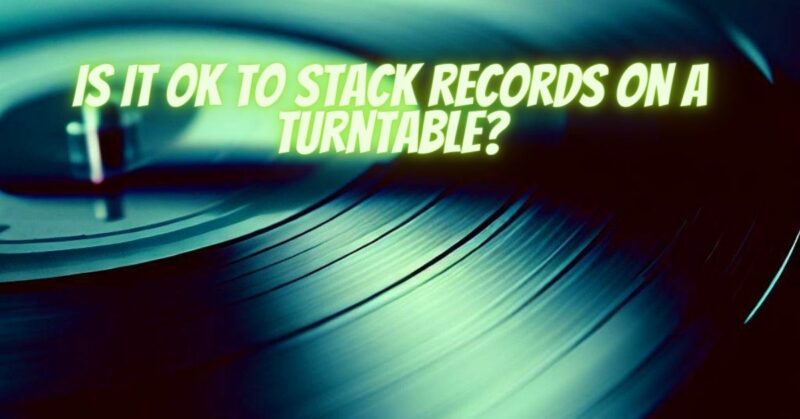The art of vinyl playback comes with its own set of considerations and best practices. Among these is the question of whether it’s acceptable to stack records on a turntable. While it might seem like a convenient way to line up multiple records for uninterrupted playback, stacking records can have potential repercussions for your vinyl collection and audio experience. In this article, we’ll delve into the pros and cons of stacking records on a turntable and provide insights into making informed decisions for optimal vinyl playback.
The Pros and Cons of Stacking Records:
Pros of Stacking Records:
- Continuous Playback: Stacking records allows for consecutive playback without the need to manually change the record after each side finishes.
- Uninterrupted Listening: This can be particularly advantageous when hosting gatherings, parties, or events where constant music is desired.
Cons of Stacking Records:
- Warping Risk: Stacking records can lead to warping due to the combined weight of the records pressing down on each other. Warped records result in compromised sound quality.
- Surface Damage: Records rubbing against each other can cause scratches, scuffs, and surface damage, leading to sound imperfections.
- Stylus Wear: Stacking records can lead to stylus wear, as the stylus encounters more friction and uneven surfaces.
- Sound Quality: Stacked records might not track properly, resulting in distorted sound, increased surface noise, and mistracking.
- Dust Accumulation: Stacking records can create static electricity, which attracts dust and particles that settle on the vinyl’s surface.
Optimal Practices for Stacking Records:
If you decide to stack records on a turntable, it’s important to adopt practices that minimize the potential risks and maintain audio quality.
- Use Record Spacers: Place record spacers between stacked records to prevent direct contact. Spacers distribute weight more evenly and reduce the risk of warping.
- Limit the Stack: Avoid stacking too many records at once to prevent excessive pressure on the lower records. A smaller stack reduces the likelihood of warping.
- Monitor the Temperature: Ensure that the turntable’s environment maintains a stable temperature to prevent heat-related warping.
Consider Alternatives:
- Record Changers: Record changers are mechanisms that allow you to stack records vertically within the turntable itself. These systems have separate tonearms to minimize pressure on the records.
- Auto-Change Turntables: Some vintage turntables have an auto-change feature that enables sequential playback without direct stacking, preventing unnecessary pressure.
While the idea of stacking records for continuous playback might be appealing, it’s important to be aware of the potential risks to your vinyl collection’s condition and audio quality. If you choose to stack records, follow best practices like using spacers and limiting the stack size. However, to ensure the longevity of your records and the highest sound quality, it’s recommended to avoid stacking altogether and instead focus on proper storage, handling, and playback techniques that preserve the integrity of your cherished vinyl collection.

